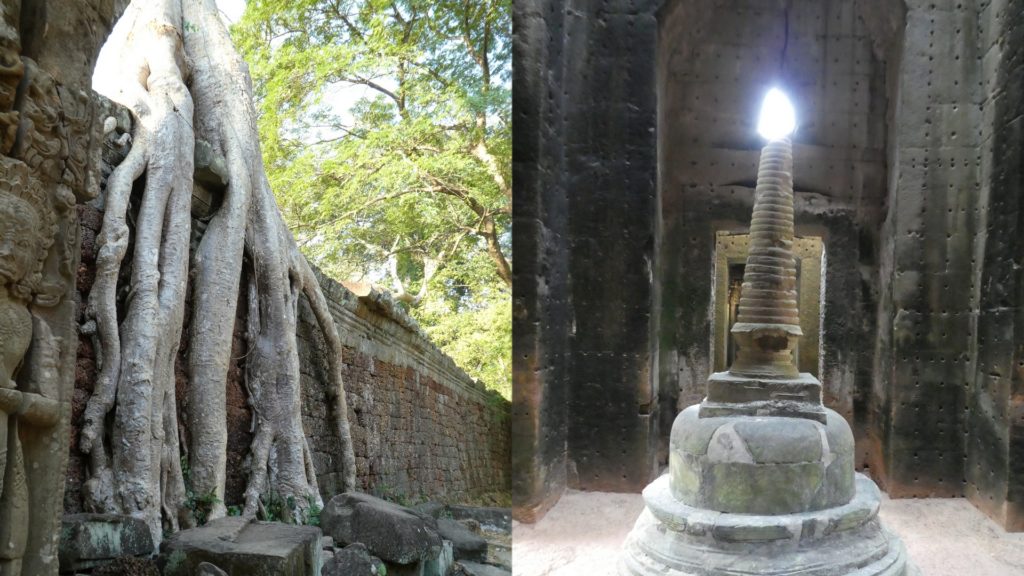Preah Khan – the temple of the “sacred sword”
Located not far from Siem Reap is the Preah Khan temple complex, built in the 12th century under the reign of King Jayavarman VII, who was also responsible for the construction of Ta Prohm, the Northern Baray and many other structures of his time.

The way to Preah Khan leads over an imposing bridge
The king dedicated the construction of this temple to the memory of his father, as well as the central statue, which (like his mother at Ta Prohm) was to honor the ancients.
Preah Khan means something like “holy sword” and served as a temporary headquarters, since Angkor Thom, which had been destroyed in a war with the Cham, first had to be rebuilt. The temple is a Buddhist site, as with all the buildings for which King Jayavarman VII was responsible, who was a professing Buddhist and probably also influenced the entire region by having numerous Buddhist temples built, some of which, however, still contained Hindu mythology. Preah Khan was not only a temple complex and monastery, but also a university with – at least according to tradition – over 1000 teachers. At the height of the city’s history, there were about 100,000 inhabitants.
Then, when King Jayarvaman VIII was in power, Preah Khan was “Hinduized”: numerous representations of Buddha (whether as statues or reliefs) were destroyed, either by simply being vandalized or remodeled.

The temple was inhabited by monks until the 17th century.
Many of the altered statues, carved from sandstone, have survived to this day: For example, representations of deities and animals can be found on walls and buildings.
Right next to Preah Khan is the Northern Baray, Banteay Prei Temple and the North Gate of Angkor Thom. The entire complex is about 5 square kilometers in size and is relatively encroached upon by the surrounding forest: It even goes so far that the trees have already overgrown parts of the structure. The site is surrounded by a moat, and the area itself is enclosed by a wall made of laterite.
It is recommended for visitors to plan at least one hour for the visit of the temple and to inform themselves in advance exactly about the layout of the building: missing signs and quite similar looking forks in the road within the temple complex can very quickly cause confusion and lead to detours. The temple is easily accessible by tuk tuk. When visiting Preah Khan, it is recommended to also plan the surrounding complexes, as here is really a beautiful monument lined up to the next beautiful monument.